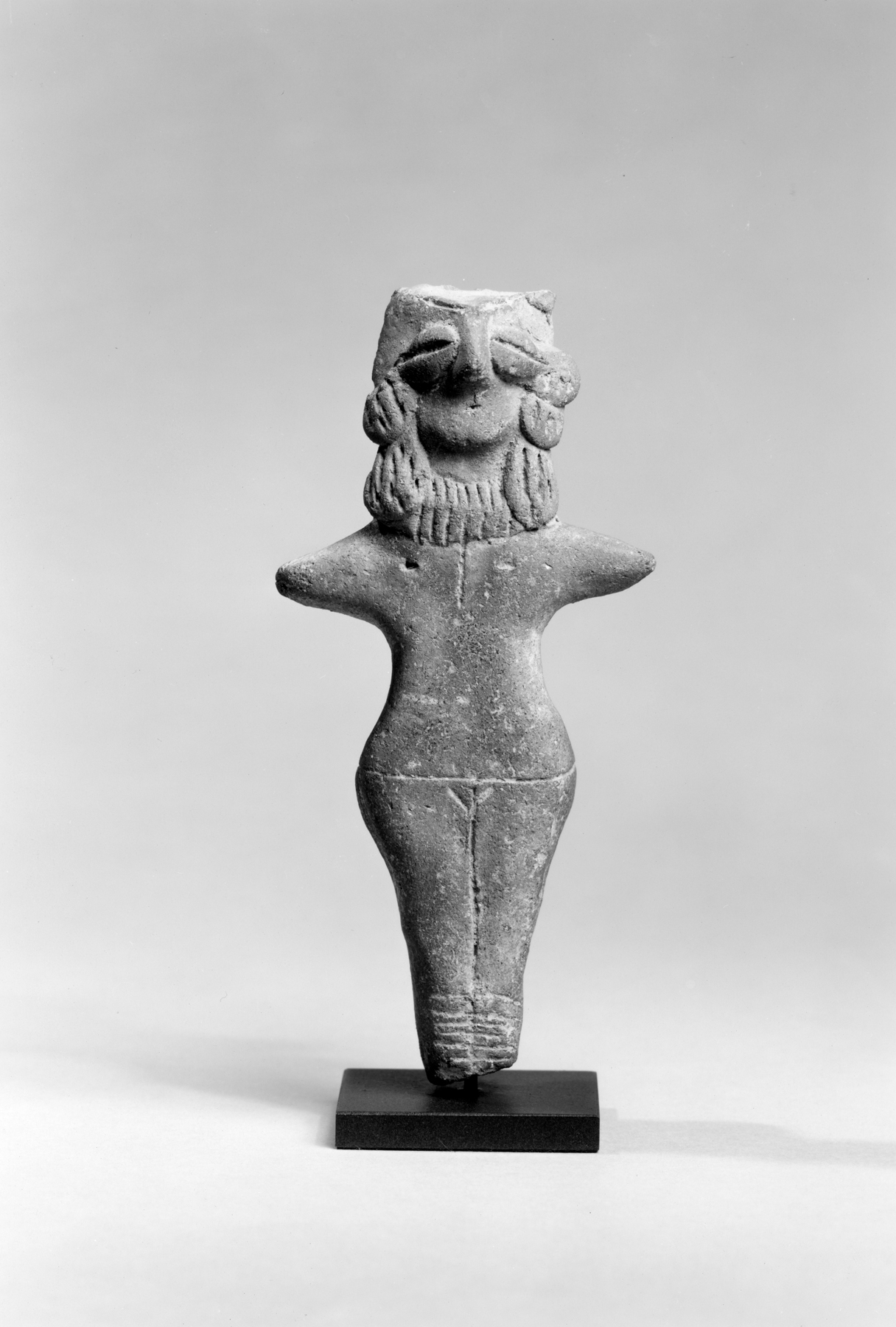Statuette of an Indian Deity
(India, Nepal, and Tibet)
Clay female figures similar to this one have been found in various parts of the Indian subcontinent. In some places, they played a part in fertility rites and were presented as offerings, face up. Such figures may be considered early forms of Indian nature goddesses.
The large head extends from a heavily ornamented neck, which is adorned with a necklace made from tiny pellets of clay, which were striated to give a beaded effect. Charsada, the ancient "Lotus City," was a major trading center in the overland trade route to India.
Provenance
Provenance (from the French provenir, 'to come from/forth') is the chronology of the ownership, custody, or location of a historical object. Learn more about provenance at the Walters.
Matthias Komor, New York, New York [date and mode of acquisition unknown]; Walters Art Museum, October 1973, by purchase.
Exhibitions
| 2008 | Faces of Ancient Arabia: The Giraud and Carolyn Foster Collection of South Arabian Art. The Walters Art Museum, Baltimore. |
Geographies
Pakistan, Charsada (?) (Place of Origin)
Measurements
H: 2 9/16 in. (6.5 cm)
Credit Line
Museum purchase, 1973
Location in Museum
Not on view
Accession Number
In libraries, galleries, museums, and archives, an accession number is a unique identifier assigned to each object in the collection.
In libraries, galleries, museums, and archives, an accession number is a unique identifier assigned to each object in the collection.
25.52


